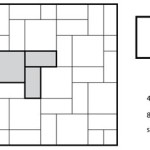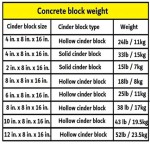How to Lay Patio Blocks: A Comprehensive Guide
Creating a beautiful and durable patio is a rewarding project that can transform your outdoor space. Patio blocks are an excellent choice for this purpose, offering versatility, longevity, and a wide range of design options. Whether you're a seasoned DIYer or a novice homeowner, this comprehensive guide will provide you with all the essential steps to lay patio blocks successfully.
1. Planning and Preparation
Before embarking on the installation, it's crucial to plan your patio layout thoroughly. Consider the size, shape, and desired features of the space. Mark the perimeter accurately using stakes and string. Clear the area of all vegetation, debris, and existing structures. Excavate the soil to a depth of at least 4 inches, ensuring the excavated area is level and free from large rocks or roots.
2. Establishing the Base
A solid base is vital for the stability and longevity of your patio. Start by creating a compacted sub-base layer of crushed gravel or limestone screenings. Spread the material evenly and compact it using a plate compactor. Install edging materials, such as bender boards or concrete footings, around the perimeter to contain the base and prevent shifting.
3. Laying the Sand Layer
Over the compacted base, spread a layer of fine sand. The depth of the sand will vary depending on the thickness of your patio blocks. Use a screed to level the sand and ensure it is uniformly distributed.
4. Placing the Patio Blocks
Begin laying the patio blocks from one corner, working your way outwards. Use a rubber mallet to gently tap the blocks into place, ensuring they are level and tightly fitted against each other. Keep the joints as tight as possible to minimize settling and shifting.
5. Cutting and Fitting Blocks
You may encounter areas where the patio blocks need to be cut to fit. Use a wet saw or angle grinder with a masonry blade to cut the blocks cleanly. When cutting, follow the manufacturer's instructions to achieve precise cuts that ensure a seamless finish.
6. Compacting and Finishing
Once the patio blocks are in place, compact the surface thoroughly using a plate compactor. This will help to stabilize the blocks and reduce settling. Sweep polymeric sand or jointing compound into the joints to fill any gaps and prevent weeds from growing. Use a stiff brush to work the sand into the joints and remove any excess.
7. Sealing
To protect your patio blocks from moisture, stains, and weathering, apply a sealant specifically designed for patio materials. Follow the manufacturer's instructions for proper application and coverage. Allow the sealant to cure completely before using your patio.
Tips for Success
- Use a spirit level to ensure that the base, sand layer, and patio blocks are level throughout the installation.
- Keep the joints between the blocks tight to prevent settling and shifting.
- Don't over-compact the sand layer, as this can make it difficult to lay the blocks properly.
- Seal the patio blocks as soon as possible after installation to protect them from the elements.
- Regularly clean and maintain your patio to keep it looking its best for years to come.

How To Prep Lay A Base For Pavers Western Interlock

How To Build And Lay A Patio Marshalls

How To Lay A Patio Expert Guide Laying Slabs Garden Ideas Tips Homebase

Diy Booster Learn How To Lay Pavers Like A Pros

How To Lay A Stone Patio Designs Stones Design

Installing Patio Stones 5 Easy Steps Shaw Brick
.jpg?strip=all)
How To Install Patio Pavers Lv

How To Install Concrete Pavers Rcp Block Brick

Build A Brick Patio Start To Finish

How To Pave The Ultimate Guide N Paving Centre








